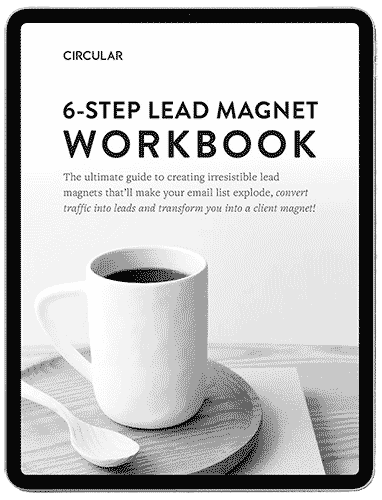Anxiety Therapy Murray UT
That feeling of being pulled in a dozen directions at once? I know it well. You’re navigating the morning commute, managing a demanding project at work, figuring out what’s for dinner, and trying to be present for your family. All while that quiet, humming tension builds in the background. From the outside, you’re successful, capable, and have it all under control. But inside, it feels like you’re running a race with no finish line. The constant “what-ifs” can be exhausting.
If this sounds even a little familiar, you are not alone, and you’re in the right place. So many of the professionals I work with here in Murray share this exact struggle. They feel like they should be able to handle it all, but the pressure has become a constant, unwelcome companion.
In this article, we’ll gently unpack what might be going on. We’ll look at the common signs of anxiety that go beyond just ‘worrying,’ explore some immediate, practical tools you can use today (like the simple 3-3-3 rule intruded here), and talk about how therapy can provide a clear path back to feeling like yourself again.

Is This More Than Just Stress? Recognizing the Signs of Anxiety
It’s easy to dismiss persistent unease as “just stress.” We live in a demanding world, especially here along the Wasatch Front where the pressure to succeed and maintain a certain lifestyle is high. But sometimes, that stress crosses a line into anxiety, a condition that can quietly seep into every corner of your life. The first step to finding relief is recognizing the signs. It often shows up in ways you might not expect. For instance, that recurring tension headache or the constant fatigue you can’t seem to shake, it might not just be from a long week. These physical sensations can be your body’s alarm system stuck in the ‘on’ position, a response well-documented by health institutions like the Mayo Clinic on anxiety symptoms (1). Mentally, it can feel like a browser with too many tabs open… your thoughts race, you jump to the worst-case-scenario, and focusing on a single task feels impossible. This can lead to avoiding social gatherings or procrastinating on important work, not because you’re lazy, but because you’re overwhelmed.
Quick, Actionable Tools to Manage Anxiety in the Moment
When you feel that wave of anxiety rising: tight chest, racing heart, sudden dread…. if you have a few simple tools it can make all the difference. These aren’t meant to be a permanent fix, but they can ground you and interrupt the anxious spiral so you can catch your breath. One of the most effective and easy-to-remember techniques is the 3-3-3 rule. Simply look around you and name three things you see. Then, listen for three sounds you can hear. Finally, move three parts of your body: your ankle, fingers, or arm. This simple trick pulls your mind away from anxious thoughts and back into the present moment. The power of these grounding techniques is significant; in fact, research from institutions like Harvard University (2) has repeatedly shown that mindfulness practices can significantly reduce the physiological symptoms of stress and anxiety. Paired with some slow, intentional breaths, it’s a powerful first-aid kit for your mental health that you can use anywhere, anytime.
When Self-Help Isn’t Enough: How Therapy Restores Your Balance
Those grounding techniques are essential for managing anxiety in the moment, but for many busy professionals, they can start to feel like a temporary patch on a deeper issue. If you find yourself constantly battling anxious thoughts or if anxiety is holding you back from living the life you want, it may be time to seek professional support. This is where psychotherapy comes in. It’s a space for you to gently identify triggers, learn evidence-based calming skills, and reshape anxious thought loops with a trained professional. One of the most effective approaches for anxiety is Cognitive Behavioral Therapy, or CBT. The core idea of CBT, as widely explained by countless psychological resources (3), is that our thoughts, feelings, and behaviors are interconnected. By learning to identify and challenge negative thought patterns, you can change your behavioral responses and, ultimately, reduce feelings of anxiety. Therapy provides a structured, supportive path to do this work, helping you build lasting skills so you can meet each day with steadier breath and restored confidence.
You Don’t Have to Choose. Start Feeling Better Today.
You don’t have to choose between your career, your family, and your own well-being. Feeling more in control, less overwhelmed, and genuinely happier is possible. Taking the first step is often the hardest, but you don’t have to do it alone.
If you’re ready to quiet the noise and find your confidence again, I encourage you to reach out. Contact our Murray office today for a free consultation to see how anxiety therapy can be tailored to fit your life.
Frequently Asked Questions About Anxiety
What are effective strategies for managing health anxiety?
Health anxiety often involves focusing on physical sensations and interpreting them as catastrophic. A key strategy is combining mindfulness to notice the sensations without judgment, and cognitive techniques (often through CBT) to challenge and reframe the fearful thoughts associated with them.
Besides constant worry, what are some other common anxiety symptoms?
Many people experience physical symptoms like muscle tension, fatigue, headaches, or stomach issues. Behavioral signs can include irritability, difficulty concentrating, sleep problems, and avoiding situations that trigger worry.
Is it possible to completely “beat” anxiety?
While anxiety is a natural human emotion, the goal of therapy isn’t to eliminate it entirely but to reduce it to a manageable level. We work to give you the tools to control your anxiety, so it no longer controls you or your decisions.
What’s the first thing I should do when I feel an anxiety attack coming on?
Try a grounding technique like the 3-3-3 rule mentioned above. Focus on your breathing: inhale slowly for four counts, hold for four, and exhale slowly for six. This helps regulate your nervous system and can lessen the intensity of the attack.

